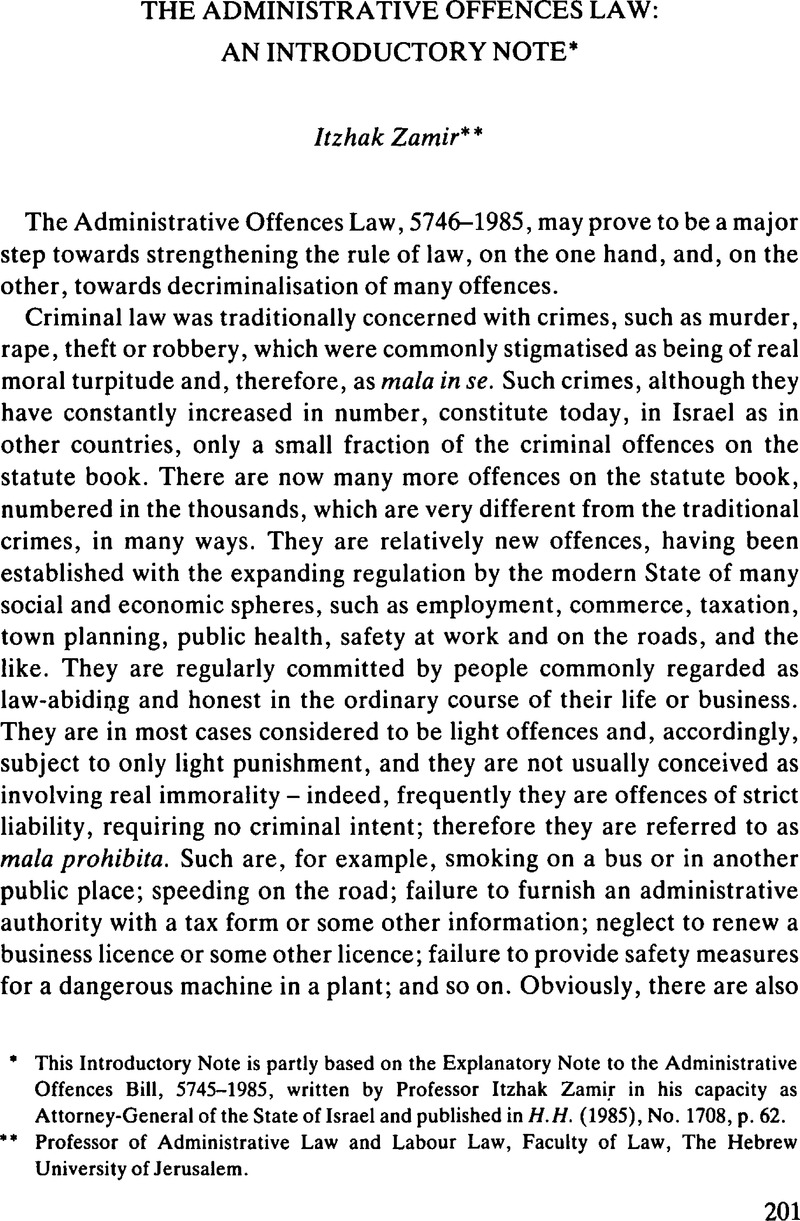No CrossRef data available.
Published online by Cambridge University Press: 16 February 2016

1 The Penal Law, 5737–1977, (Special volume L.S.I.) contains just over 500 sections and enumerates about 400 different offences. There are, in addition, other offences, prescribed in other laws, which are in the nature of serious crimes. Their number is estimated in the few hundreds. A Report by Justice on Breaking the Rules – The Problem of Crimes and Contraventions (chairman of the Committee: Paul Sieghart, published by Justice, London, 1980) brings the figures for Britain. According to this Report, out of 7,200 statutory offences, only about 750 require intent of deliberate dishonesty, deliberate physical injury or sexual gratification, and about 3,750 require no criminal intent. See pp. 15–16, 21–22. It is believed that the comparable numbers in Israel are not very different. And as to the number of offenders against regulatory legislation, suffice it to note that light traffic offences alone account for more than half of the total number of criminal cases tried by the courts in Israel. It should also be borne in mind in this context that most traffic offences do not reach the courts: in about 80%. of traffic offences without accidents fines are paid without trial. See Judicial Statistics 1984 (The Central Bureau of Statistics, Jerusalem, 1985) xvii, 6Google Scholar.
2 In other countries they may be described by different names. For example, in Austria they are called (in English translation) – “administrative transgressions”; in Italy – “administrative breaches”; in the Federal German Republic – “infringement of order”. See Report by Justice, supra n. 1 at 44–52. The Report of Justice suggests that in Britain they should be called “contraventions” as distinct from “crimes”. Ibid., at 8.
3 For a brief description of the situation in this matter in various countries, see Report by Justice, supra n. 1 at 44–52.
4 Criminal Procedure Law (Consolidated Version), 5742–1982, secs. 221–230 (36 L.S.I. 35 at 72–75).
5 30 L.S.I. 223.
6 S.H. (1984), No. 1118, p. 142.
7 See Ginossar, S., “Autonomy of Corrective Law: A Projection of the Doctrine of Constructive Negligence” (1974) 9 Is.L.R. 24Google Scholar; Cf. Report on Decriminalisation (Council of Europe, Strasbourg, 1980)Google Scholar.
8 H.H. (1985), No. 1708, p. 62.
9 For the full text of the Administrative Offences Law, see infra.
10 Administrative Offences Regulations, 5746–1986, K. T. (1986), No. 4923, p. 774.